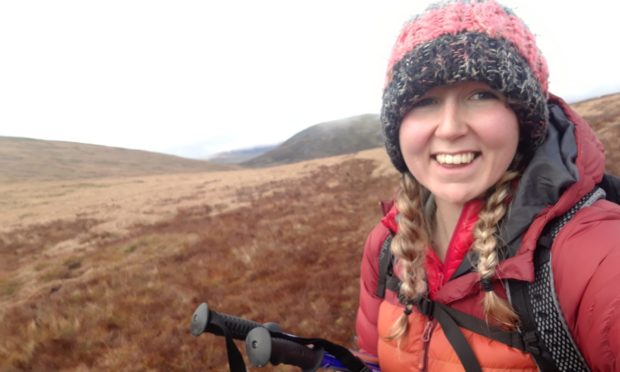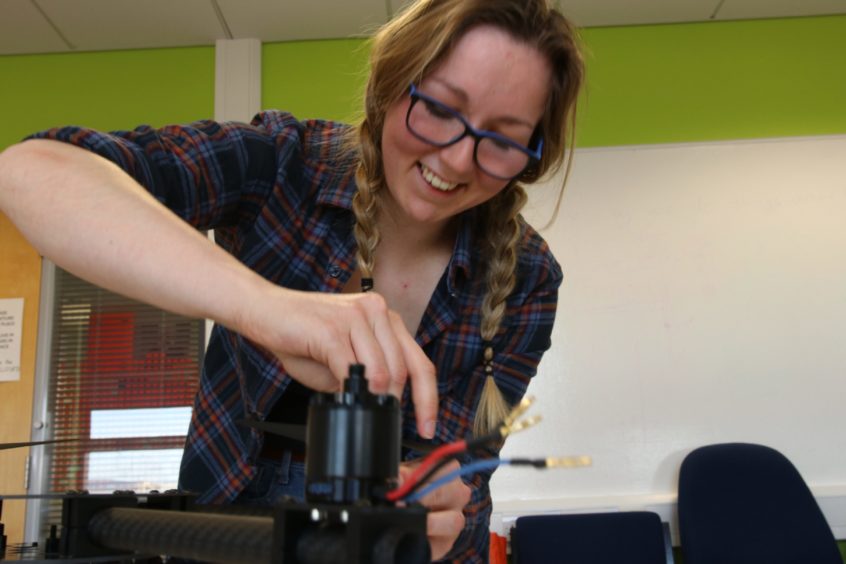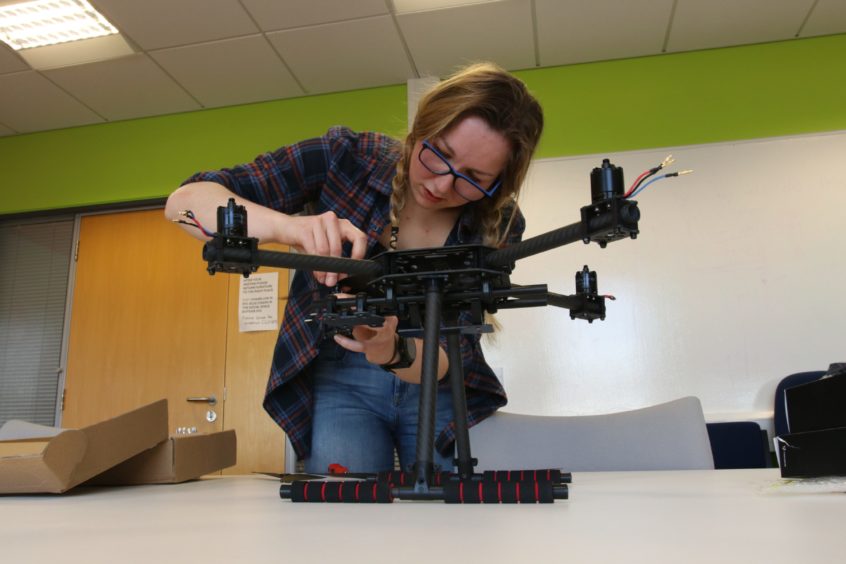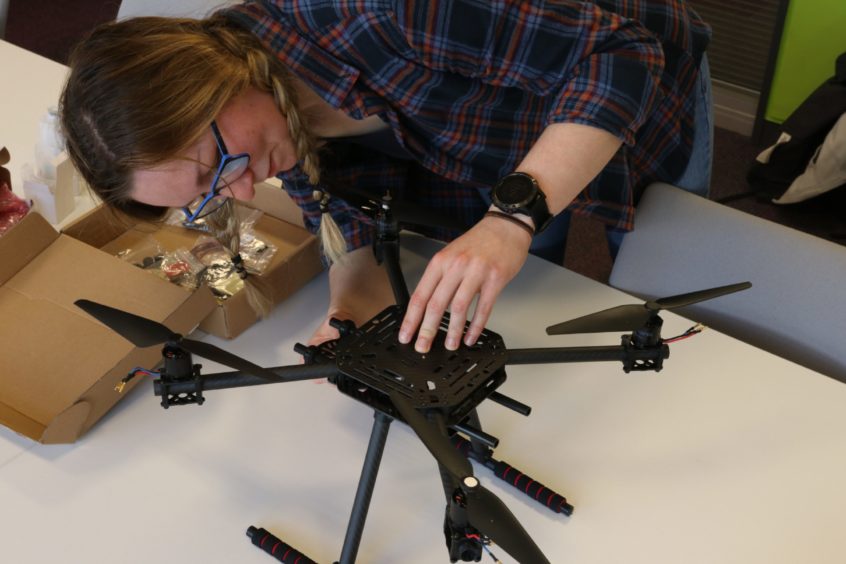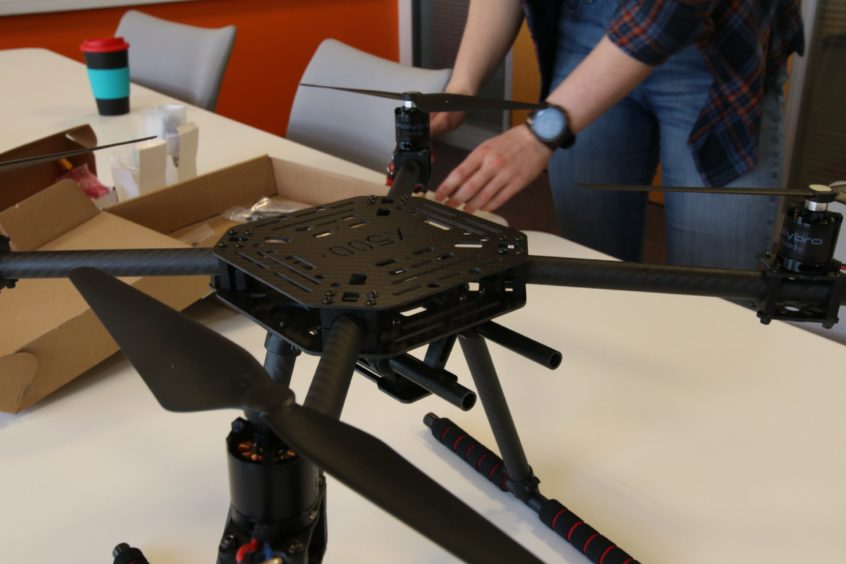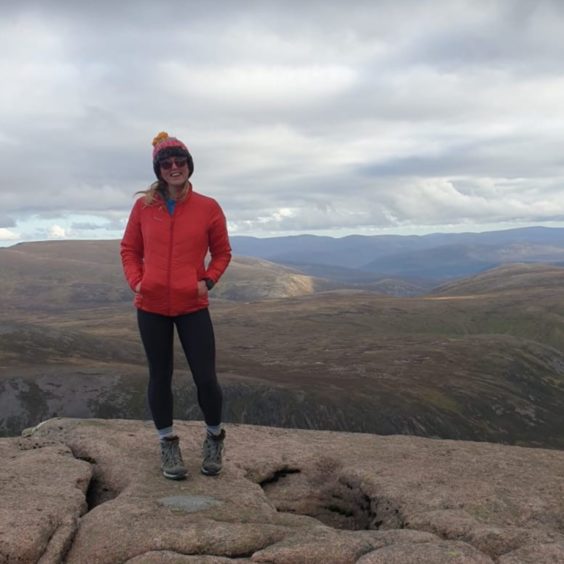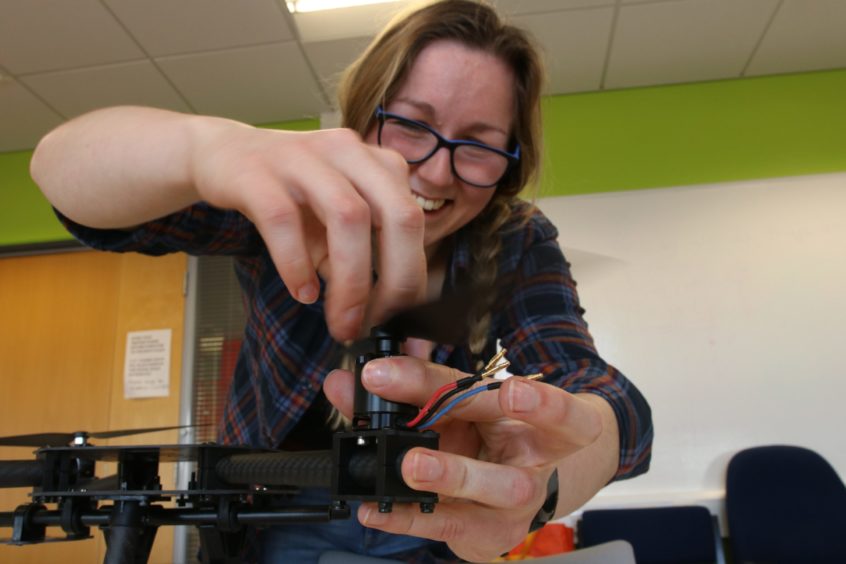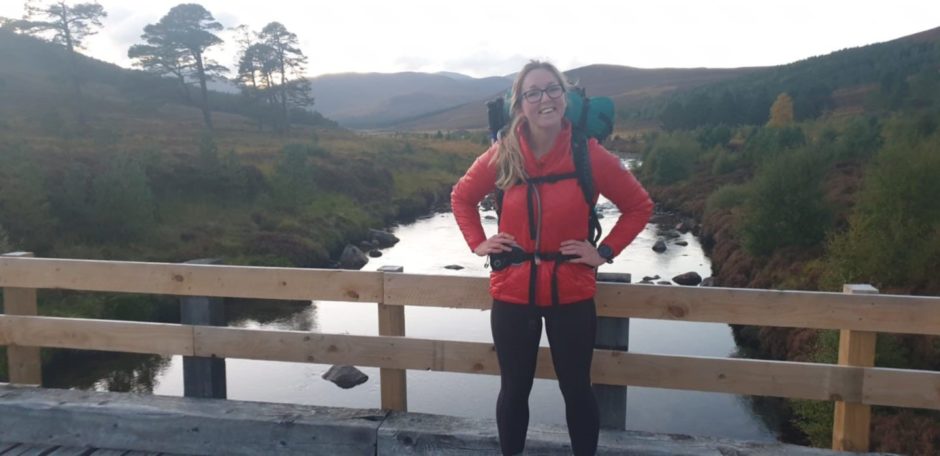An Aberdeen medical student has built a special drone to help injured walkers stranded on Scotland’s hills and mountains.
Outdoors enthusiast Sophie Barrack took on the challenge of finding out what medical supplies would be most useful in an emergency in a rural location, and if it would be possible to deliver these by drone.
After sending a survey to mountain rescue volunteers, employees and NHS healthcare professionals, she researched, designed and built a prefabricated drone.
Ms Barrack now intends to test whether it could carry the weight of emergency items after the top two answers were medication and medical equipment.
She said: “My main interest was in finding out whether healthcare and mountain rescue workers thought a drone could be used to deliver essential medication and equipment in remote areas, which – according to my survey – they do.
“I then wanted to get a rough idea of a ‘top five things’ that such a drone should have in their opinions.
“The building of the drone was a bit of an afterthought but, if nothing else, it adds a physical element to the project which can hopefully kick-start discussions, as well as giving us an idea as to how big and powerful a drone would be required.”
Medication delivered could include items such as painkillers, insulin, an EpiPen or fluids while medical equipment could include glucose testing equipment, tourniquets, dressings, catheters, oxygen and defibrillators.
The survey found that 86% of respondents thought drones could be used in healthcare in Scotland while 73.5% thought drones could be used in emergency healthcare and 71.4% thought they could be used in a remote and rural setting.
Ms Barrack’s drone is a more conventional “off the shelf” model and although it doesn’t have the range to reach people in remote areas, she hopes to establish whether it could fly in Scottish weather conditions while holding the weight of medical equipment.
“Drones have been used to locate missing people in remote areas, so it would be great to explore if they could be used for delivering small amounts of medication or equipment to climbers or walkers in trouble quickly while a mountain rescue team attempts to reach them,” Ms Barrack added.
“Mountain Rescue and other related services are still absolutely crucial, but if there was a way to get some initial aid to the patient quickly, could that potentially lead to better outcomes? These are the kinds of questions I am interested in.”
